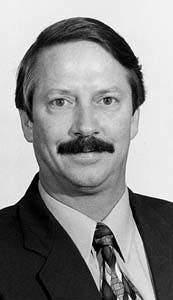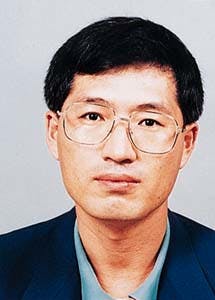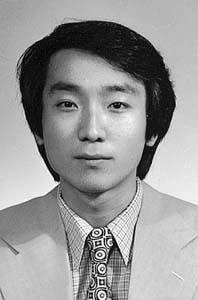New cracking processes have good reliability
Mark W. Schnaith, P. Alex Sexson, Daniel R. TrueThe cracking units of Coastal Eagle Point Oil Co. (Cepoc), Westville, N.J., and SK Corp. (formerly Yukong Ltd.), Ulsan, have demonstrated outstanding operability and onstream performance.
UOP LLC
Des Plaines, Ill.
David B. Bartholic
DART Inc. of Texas
Watchung, N.J.
Young Keun Lee, Ik Sang Yoo, Hun Sik Kang
SK Corp.
Ulsan, Korea
Cepoc has a millisecond-catalytic cracking (MSCC) unit, and SK has a reduced-crude conversion (RCC) unit. The MSCC unit has achieved a more than 98% onstream factor and the RCC unit has a 100% onstream factor.
Many factors are instrumental in achieving this performance, including unit design, good construction and maintenance programs, skilled and well-trained operators, and an overall commitment to excellence.
Over the past 12 years, the yield performance of the fluid-catalytic cracking (FCC) process has been improved through major advances in technology, which include catalyst coolers, feed-injection systems, riser-termination devices, custom catalyst formulations, and new process designs, such as MSCC technology. These features not only boost liquid yields but also permit the processing of lower-quality and lower-cost feeds, thereby increasing the profitability of the refinery.
Gains from new technology can be lost quickly, however, when the FCC unit (FCCU) undergoes an unplanned shutdown. The lost revenue from one day of downtime can eliminate more than a month of profitability improvement from a technology upgrade. For example, a refiner may realize a product value increase of $5,000/day from the upgrade of an average-size FCCU but may recognize a loss of $200,000 for a single day of lost production. Thus, profitability is dependent on the onstream reliability of the FCCUs.
Operability and Reliability
Reliability of a process unit begins with its operability. A complex and difficult-to-operate unit will inherently suffer from reliability problems. The level of onstream efficiency achieved is often a result of the confidence that the operators have in their unit. The overall level of confidence that operators develop toward the unit is dependent on the ease of start-up, shutdown, and emergency and upset handling.Confident and satisfied operators generate higher onstream efficiencies than operators who lack confidence or understanding of how to operate the unit. Process unit designers must focus on these operability issues, otherwise all the best intentions from adding the latest technology can be wasted.
Reliability factors
The FCCU is particularly prone to problems that can develop as a result of poor engineering or mechanical design. One factor in developing good designs is the timely feedback of field experience into design and mechanical improvements. Working with a licensor that has a strong service function for its customers can have a critical impact on improving process unit design to increase reliability.A second factor to improving reliability is attention to construction details and the use of proper equipment. Quality control is essential, particularly in refractory-lining installation. Many units suffer unnecessary shutdowns simply because jobs were rushed as a result of schedule problems.
Skilled and well-trained operators along with good asset management (inspection and maintenance) plans are also critical. These subjects are well covered in other publications.
Onstream factor
A testimony to good FCCU design is how well the operators can keep the unit onstream. This onstream factor (or onstream efficiency) is defined as the percent of time the unit is operating for a given time period. A typical operating cycle for FCCUs is 3 years. The onstream factor typically excludes the time devoted to normal turnaround maintenance because the focus is on unplanned shutdowns.The onstream factor between turnarounds can be a good tool for measuring performance and tracking improvements. Therefore, all days of lost production between turnarounds must be considered. To exclude any shutdowns that are utility related or non-FCC related devalues the measurement and adds confusion to the meaning of FCC onstream efficiency.
Surveys and benchmarking
The actual run length between turnarounds impacts the onstream factor. Longer run lengths are not always better. Longer run lengths have more potential for unplanned shutdowns because wear and tear on the unit increases. Good historical records and benchmarking can determine the best FCC run length for a particular refiner. The National Petrochemical & Refiners Association (NPRA) conducts surveys to track this type of information. Solomon Associates Inc. data are also used to help benchmark performance in this area.UOP has also conducted surveys of its customers to benchmark units. Fig. 1 [47,560 bytes] shows recent data on the number of forced shutdowns per year for a large sampling of FCCUs. The units are grouped geographically into three categories: North and South America; Europe, Africa, and the Middle East; and Asia.
More than 50 FCCUs participated in this survey. A forced shutdown day is 24 hr of lost production. The far left column in each group represents one shutdown for every 3 years of operating time, and the far right column in each group represents more than four shutdowns/year. One forced shutdown/year is the average for this population.
The reasons for these shutdowns are summarized in Fig. 2 [40,414]. In the past, cyclones and rotating equipment were the predominant reasons for forced shutdowns. Current data indicate that utility failure is the leading cause, although cyclones and rotating equipment are not far behind. These results cover a broad range of unit capacities and age.
Reliability examples
The subject of reliability has been discussed in general to provide background information, define terms, and present key factors that can affect onstream efficiency. The examples in this section demonstrate that high FCCU onstream reliability can be achieved in practice.Two different units were profiled to determine their operability and reliability. One unit is a revamp of an old unit in N.J. to the MSCC process. The other is a relatively new RCC unit in Ulsan, Korea.
MSCC process
In 1994, Cepoc revamped its conventional 55,000 b/d FCCU to a short-contact-time system known as the MSCC process.The FCCU at Cepoc was originally a 25,000 b/d Model III design built in 1948. Over the years, it was gradually increased to 55,000 b/d. The regenerator was a high-elevation, single-stage type that burned in complete combustion with a combination of lift-riser and bubbling-bed environments. The reactor employed feed injection at the bottom of the riser and inertial catalyst-vapor separation at the end of the riser.
Fig. 3 [64,063 bytes] shows the final elevation plan of the MSCC revamp at Cepoc. The regenerator was elevated by 40 ft, and the new MSCC reactor was placed directly below the regenerator. Regenerated catalyst flows straight down from the regenerator into the reactor. A shaped, falling curtain of catalyst contacts the oil, which is injected perpendicular to the catalyst through a proprietary feed distributor. Reactions occur in a horizontally flowing section of the reactor.
The reaction products pass to the external cyclones, and spent catalyst falls into the stripper. Spent catalyst from the stripper flows to the air-lift riser, where coke burning begins. The catalyst is lifted into the regenerator bubbling bed, where coke burning is completed.
MSCC performance
Some of the benefits that Cepoc realized were:- Increased resid processing capability
- Improved yield structure through enhanced catalytic reactions
- Increased overall liquid-volume yield and higher hydrogen content in the unconverted products
- Reduced dry gas yield
- Higher LPG olefinicity, gasoline octane, and light-cycle oil (LCO) cetane
- Reduced dehydrogenation by contaminant metals even though metals levels increased
- Reduced catalyst addition rate from 15 to 25 tons/day to 8-10 tons/day.
The MSCC unit at Cepoc began its 37th month of operation in January 1998. The unit has processed feed for 1,060 days out of 1,080 days since the revamp and start of this run-an onstream factor of 98.2% (1,060 4 1,080 3 100%). This performance is excellent compared with other FCCUs around the world, especially considering that this unit is the first MSCC operation. Fig. 4 [37,067 bytes] shows the feed rate history.
The high onstream factor of the MSCC unit is a result of its ability to handle upset conditions, steady-state operation, ease of operation, and feed flexibility.
The MSCC unit has handled upset conditions well. Over its 3-year run, the unit experienced several simultaneous steam and power failures. Each time, within 4 hr of restoring steam pressure, the unit was back onstream and producing on-spec products.
During normal steady-state periods, the operability of the MSCC unit is similar to that of conventional riser units. Because the MSCC control scheme and the number of control points are similar to those of a riser unit, the amount of operator attention is similar. The external cyclones of the MSCC reactor provide a unique opportunity to troubleshoot dipleg flow problems and take corrective action while the unit is operating. This feature has prevented at least one unscheduled shutdown at Cepoc.
MSCC ease of operation
The operators have commented on how easy the MSCC unit is to start up and shut down compared to the previous unit. Fig. 5 [33,163 bytes] illustrates a typical timetable for starting the MSCC unit. Only 2 hr are needed to progress from 0 to 100% design capacity. Even quicker start-up times could be achieved in the catalyst section if they were not limited because the main fractionator and gas concentration plants need time to catch up.The unit is easy to start up and shut down for several reasons. First, because the reactor vessel is small and of cold-wall construction and the cyclones are external, concerns about expansion and thermal cycles are not the same as for conventional riser units that have hot-wall reactors and internal cyclones.
Second, concerns about riser (the unit has none) and cyclone velocities are less than with alternative short-contact-time systems. Because catalyst is falling down through the reactor instead of being lifted up a riser, the risk of overloading the disengager and cyclones and carrying catalyst over to the main column is minimal.
Finally, the unit does not require steam to circulate catalyst prior to feed injection as in a riser unit. Not only does the unit benefit by reduced catalyst attrition and deactivation, but it also benefits by not having to remove a large amount of water from the main fractionator after feed has been cut in.
MSCC feed flexibility
The MSCC unit has also demonstrated the ability to easily handle feed-quality changes. The Cepoc refinery frequently changes crude source, sometimes as often as two or three times in one week. This situation impacts the feed to the MSCC unit because the relative amounts of gas-oil and resid in each crude are different.Cepoc uses intermediate storage to manage the quantity and quality of the feed. Often, the resid component comes from storage tanks and is from a different crude than that of the gas oil. As a result, the feed quality has varied considerably-from 11.6 to 12.5 UOP K and 0.2 to 2.8 wt % Conradson carbon (Fig. 6 [49,927 bytes]).
The improved metals tolerance of the MSCC process enables the unit to handle a wide range of more-contaminated feedstocks and represents a huge economic benefit to Cepoc. Operation at higher levels of metal on catalyst allows lower catalyst addition rates or an increase in resid processing capability or both.
Ideally, a catalytic cracking unit should produce beneficial yields from a variety of feeds at high onstream efficiency. Unfortunately, these two characteristics are often mutually exclusive. After 3 years of operation, the MSCC unit at Cepoc has proven that it can achieve high yields from a variety of crudes with a high onstream factor of 98.2%.
RCC process
The UOP RCC unit at SK in Ulsan, was successfully commissioned in September 1996 and completed its first run after 312 days of operation with 100% onstream efficiency. A planned turnaround was originally scheduled after 1 year of operation. Although the RCC unit's good performance did not dictate a turnaround, maintenance needs in the CO boiler area required the turnaround as planned.The first turnaround was completed ahead of schedule, and the unit was successfully restarted after a thorough inspection. Only minor maintenance work was done in the RCC unit. Since the turnaround, the operations record has continued at 100% onstream efficiency. A number of factors have contributed to this success, including good unit design, well-trained operators, a thorough check during construction, and well-planned and implemented maintenance programs after start-up.
This unit uses a two-stage regenerator with two catalyst coolers (Fig. 7 [59,097 bytes]) to maximize feedstock flexibility. Design capacity was 40,000 b/sd of 100% hydrotreated atmospheric residue derived from Middle East crudes.
After 45 days onstream, the unit demonstrated performance exceeding guaranteed representations and was operating at 110% of design capacity. The average unit performance from the first run is shown in Table 1 [38,570 bytes]. A summary of this unit's performance has been previously reported by Schnaith and Kauff.2
The operations record for the RCC unit is exceptional, and no unplanned shutdowns have occurred during more than 450 days of operation (Fig. 8 [38,282 bytes]). In addition, design capacity is routinely exceeded by up to 30%.
RCC team effort
A well-coordinated team effort during construction between the SK construction, operations, and technical service teams and UOP process advisors and inspectors was instrumental to the subsequent operations success of the unit.UOP process advisors arrived on site 6 months prior to the unit start-up to assist with check out and remained on site through the start-up to ensure that unit performance met expectations. This teamwork, along with SK management's commitment to Supex (Super Excellence: on time, on budget, no injuries, and a one-shot start-up) ensured that the unit was truly ready for operation during the initial start-up period.
The SK commitment to operations training began 2 years prior to the commissioning of the unit. This commitment included UOP-organized training courses as well as a rigorous training program organized by SK. The UOP process advisors who were on site for the start-up continued with the training programs up to the time of commissioning.
The cooperation and teamwork between UOP and SK continued well beyond the initial start-up period. UOP process advisors remained on site for 6 months following the start-up to assist with unit optimization, profit maximization, and further operations training. A close working relationship continues between UOP technical services and SK technical service and operations teams to ensure the continuation of outstanding operations.
Well-planned operations monitoring and proactive maintenance programs are in place to minimize the risk of unplanned shutdowns. This program includes corrosion monitoring and control, regular checks on the skin temperature of cold-wall vessels and lines, and analyses of operating trends to detect changes that might indicate a potential problem. The SK maintenance department also directs significant effort toward preventive maintenance programs and asset management.
The RCC unit proved its flexibility in handling a wide range of feedstock quality (Fig. 9 [36,296 bytes]). Feeds with more than 6.5 wt % Conradson carbon have been processed; the average carbon content was more than 5 wt %. Equilibrium catalyst metals are typically around 10,000 wt ppm.
References
- Kauff, D.A., Bartholic, D.B., Steves, C.A., and Keim, M.R., "Successful Application of the MSCC Process," Paper AM-96-27, NPRA Annual Meeting, San Antonio, Mar. 17-19, 1996.
- Schnaith, M.W. and Kauff, D.A., "Resid FCC Regenerators: Technology Options and Experience," Paper AM-97-13, NPRA Annual Meeting, San Antonio, Mar. 16-18, 1997.
The Authors
Mark W. Schnaith is the FCC product technology manager in UOP LLC's project sales group. His responsibilities include managing the product line of FCC technology for new units and revamps. He has worked with UOP for 22 years and has held a variety of positions in research and development, field operating services, and operating technical services.
Schnaith is a technology specialist in FCC/RFCC/MSCC and hydrocracking. He holds a BS in chemical engineering from Hulman Institute of Technology, Terre Haute, Indiana.
P. Alex Sexson is an FCC process specialist for UOP LLC. For the past 6 years, he has provided technical support to UOP's FCC technologies.
Sexson holds a BS in chemical engineering from the University of Colorado.
Daniel R. True is an FCC process specialist for UOP LLC. Prior to this, he was the on site senior chief technical advisor at SK Corp.'s RCC complex during construction, start-up, and operation.
True holds a BS in chemical engineering from the University of Wisconsin.
David B. Bartholic is president of DART Inc. of Texas. He spent a majority of his career in the oil refining industry involved with FCC processes or related circulating fluid systems. In 1989, he founded DART to work in partnership with the Coastal Corp. to commercialize his MSCC and discriminatory destructive distillation processes, which are now licensed by UOP.
Bartholic holds a BS in chemical engineering from the Missouri School of Mines and a professional degree in chemical engineering from the University of Missouri, Rolla.
Young Keun Lee is a director of the production technology center at SK Corp., Ulsan, Korea. He has more than 20 years of experience in various refining and petrochemical operations.
Lee holds a BS in chemical engineering from Korea University and is a registered professional chemical engineer in Korea.
Ik Sang Yoo is a general manager of the process design team at SK Corp., Ulsan, Korea. He has more than 15 years of experience in various refining processes, technical services, and design activities.
Yoo holds an MS in chemical engineering from the Korea Advanced Institute of Science & Technology.
Hun Sik Kang is a general manager of the FCC operations department at SK Corp., Korea. For the past 15 years, he has been engaged in operations of petrochemical and FCC plants.
Kang holds a BS in chemical engineering from Seoul University.
Copyright 1998 Oil & Gas Journal. All Rights Reserved.







